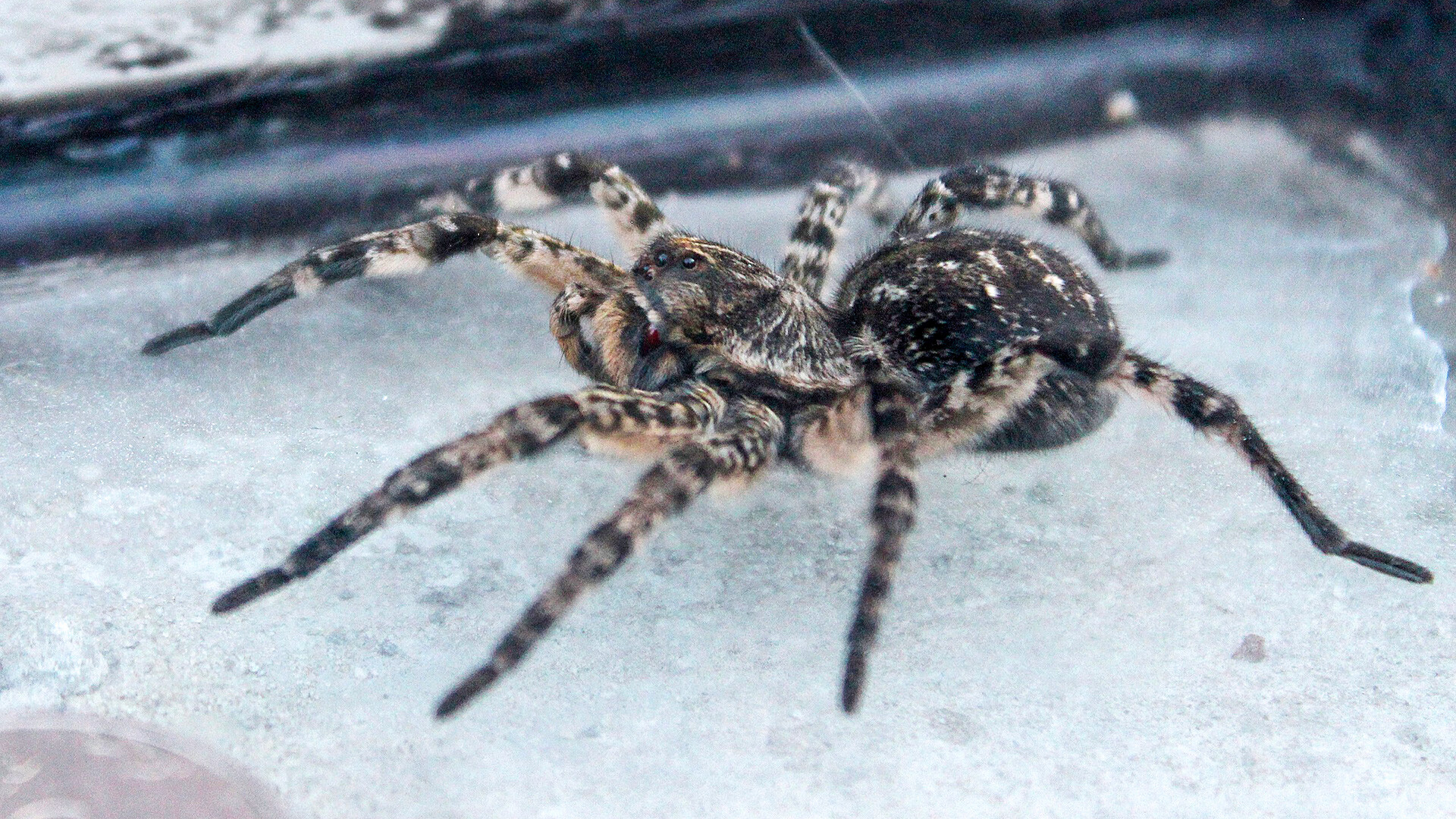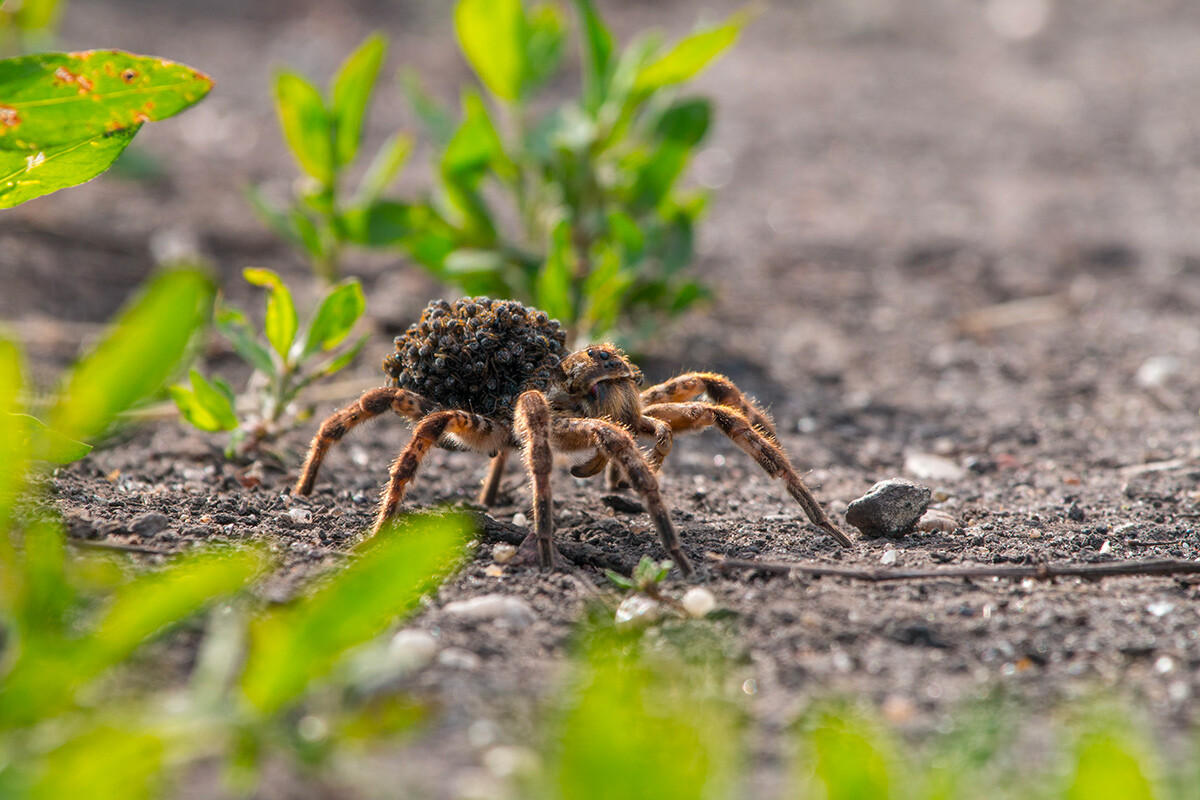
Locals call it ‘mizgir’ - this Old Russian word means "to knit". Initially, it looks frightening: an orange-brown furry body 3 cm long and 8 fluffy legs. And what a piercing stare!
Although the tarantula’s sting is not considered fatal to humans, it does cause severe swelling, similar to that caused by a hornet sting. However, you shouldn’t be afraid of it - it doesn’t release his poison with every bite and it’s not interested in people.
‘Mizgirs’ are very important for the steppe ecosystem and, in some regions of Russia, are also included in the Red Book (of endangered species).
The spider lives in a deep vertical burrow and when a small insect runs nearby, it grabs it lightning fast and, to put it bluntly, keeps it for lunch. The "signal" which alerts of the approach of the victim is a cobweb, which the ‘mizgir’ lines the top of the burrow with.

Female tarantulas are always mothers to many offspring and they carry them on their backs until they are fully mature. One such mother can have up to 50 baby spiders at once! And they only move on from their parents when they feel ready.
Dear readers,
Our website and social media accounts are under threat of being restricted or banned, due to the current circumstances. So, to keep up with our latest content, simply do the following:
If using any of Russia Beyond's content, partly or in full, always provide an active hyperlink to the original material.
Subscribe
to our newsletter!
Get the week's best stories straight to your inbox